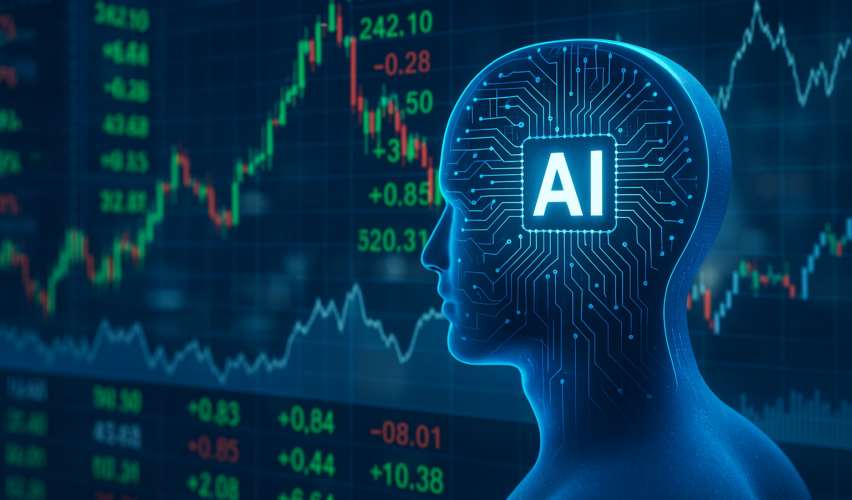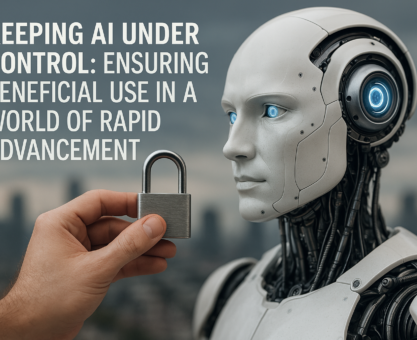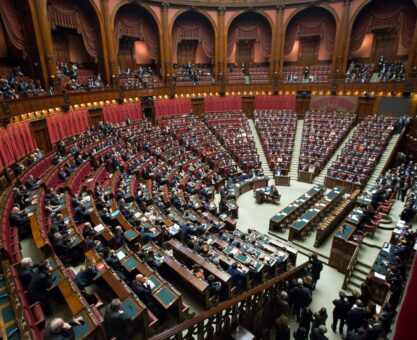The global economic landscape in the early months of 2025 presents a complex web of challenges and uncertainties, largely stemming from escalating trade tensions, most notably between the United States and China. The implementation of new tariffs on imports, particularly those levied by the Trump administration on goods from China, has triggered retaliatory measures and fostered an environment of economic unpredictability. These developments carry significant implications for businesses operating across international borders, the stability of global supply chains, the prevalence of inflationary pressures, and the financial well-being of individuals. In this climate of rapid change and potential disruption, artificial intelligence (AI) is increasingly recognized as a crucial tool for deciphering complexity, analyzing vast quantities of data, and facilitating informed decision-making. This article will explore the diverse ways in which AI tools can empower businesses and individuals to understand, adapt to, and potentially even thrive amidst the fluid and demanding conditions of the current global economy.
The Trigger: Escalating US-China Tariffs in April 2025
The economic relationship between the United States and China underwent a significant transformation in April 2025 with a series of aggressive tariff implementations. President Trump, invoking the International Emergency Economic Powers Act (IEEPA), initiated a 10% tariff on imports from all countries, effective April 5, 2025. Following this, on April 9, 2025, the administration imposed individualized reciprocal tariffs at higher rates on nations with substantial trade deficits with the US.
China found itself particularly targeted in these escalating trade measures. Reports from early April 2025 indicated a cumulative tariff increase on Chinese goods reaching 104%, combining previously existing levies with the newly announced ones. This figure continued to climb, with later reports suggesting the total tariffs had surged to 125%, and even as high as 145% when factoring in import taxes related to fentanyl trafficking. China responded swiftly with retaliatory tariffs on goods imported from the US, initially set at 84% and subsequently increased to 125% in direct response to the escalating US tariffs.
Furthermore, the United States revoked the duty-free de minimis treatment for low-value imports originating from China and significantly increased the associated duties. While a temporary 90-day pause was announced for reciprocal tariffs on nearly 60 other countries, this suspension specifically excluded China, highlighting the continued focus on this key trading relationship.
Ripple Effects: Global Economic Ramifications
The ramifications of these intense tariff actions are being felt across the global economy. American consumers are facing the prospect of higher prices for a wide array of imported goods, spanning electronics, clothing, and everyday household necessities. Analysis from the Yale Budget Lab projected a significant short-term financial burden on the average US household due to the comprehensive tariffs implemented in 2025.
Businesses are encountering substantial challenges in adapting their established supply chains to navigate increased costs and the ever-present risk of further trade restrictions. There is also the possibility that China might strategically redirect its exports to other countries, potentially at more competitive prices, while simultaneously cultivating stronger trade relationships with alternative partners.
Concerns about rising inflation have been voiced by prominent figures such as Federal Reserve Chair Jerome Powell, and J.P. Morgan Research has estimated a notable increase in the Personal Consumption Expenditures (PCE) price index in 2025 as a direct consequence of these trade measures. The tariffs are also anticipated to exert a downward pressure on economic growth in both the United States and China, raising fears of a broader global recession.
The financial markets have reacted with considerable volatility and downturns in response to the announcements and implementation of these tariffs, reflecting the heightened economic uncertainty. Certain sectors are particularly vulnerable, including electronics and digital companies with significant import reliance on China, such as Apple. Key US exports to China, like energy products and soybeans, are also facing substantial disruption, and the automotive industry is likely to experience pressure to increase consumer prices.
A Protectionist Turn: Reversing Globalization?
The scale of the tariff increases implemented in early 2025 marks a significant move towards protectionist trade policies, potentially reversing the trend of globalization that has characterized international economics for decades. Data from the Peterson Institute for International Economics (PIIE) indicates that the average US tariff rate on Chinese exports has soared to over 134%, a forty-fold increase since the US-China trade war began in 2018. This level of protectionism is reminiscent of the trade policies seen during the Great Depression, signaling a fundamental shift with potentially long-term consequences for global commerce.
While the US administration has articulated goals of revitalizing domestic manufacturing and reducing the trade deficit with China, many economists and analysts remain skeptical about the efficacy of these measures and foresee potential negative outcomes such as increased inflation and economic recession. Analysis from Al Jazeera suggests that while some domestic industries might experience reduced foreign competition, they will also likely face higher costs for essential intermediate goods used in their production processes. Furthermore, China’s established competitive advantages, including significantly lower labor costs, make it challenging to displace its dominance in global manufacturing.
The strong and unequivocal response from China, pledging to “fight to the end” against the US tariff measures, indicates a protracted trade conflict with ongoing uncertainty and the potential for further escalations. The Commerce Ministry in Beijing described the US actions as “a mistake on top of a mistake”, and President Xi Jinping cautioned that such aggressive trade policies could lead to “self-isolation”. This resolute stance suggests that the economic disruptions resulting from the trade war are likely to persist and possibly intensify in the near future, necessitating that businesses and investors adopt proactive and adaptable strategies to navigate this evolving landscape.
AI to the Rescue: Tools for Navigation
To effectively navigate the complexities and uncertainties introduced by these economic shifts, a diverse range of AI tools are available, each offering unique capabilities for analysis and adaptation. These tools can be broadly categorized based on their primary function:
Categories of AI Assistance
- AI for Economic Data Analysis and Forecasting: These tools employ machine learning algorithms and natural language processing to scrutinize economic indicators, news articles, and comprehensive reports. Their aim is to discern underlying trends and generate predictions about the future state of the economy.
- AI for Market Trend Prediction and Consumer Sentiment Analysis: By analyzing extensive market data, social media activity, and consumer reviews, these tools can forecast emerging market trends and gauge shifts in consumer sentiment that may be directly influenced by the imposition of tariffs.
- AI for Business Strategy and Operations Optimization: These tools are designed to assist businesses in refining their internal operations, adjusting marketing strategies, and optimizing their overall business approach in direct response to the evolving economic environment shaped by tariffs.
- AI for Supply Chain Resilience and Adjustment: In the face of trade disruptions caused by tariffs, these tools help businesses monitor their supply chains, identify potential vulnerabilities, and optimize their logistics and inventory management processes.
- AI for Financial Forecasting and Risk Management: These tools empower both businesses and individuals to project future financial performance, manage the various risks associated with economic uncertainty, and make more informed investment decisions in a volatile market.
- AI for Personal Finance and Investment Decisions: For individuals navigating the complexities of a changing global economy, these tools offer assistance in managing budgets, tracking expenditures, increasing savings, and making prudent investment choices.
The categorization of these AI tools underscores the wide-ranging impact of the tariffs on various aspects of the economy, necessitating a comprehensive strategy that integrates AI across different business functions and personal financial management practices. The increasing accessibility of these AI tools for both businesses and individuals suggests a trend towards the democratization of sophisticated analytical capabilities. This could potentially create a more level playing field for smaller enterprises and empower individuals to exert greater control over their financial well-being during these uncertain times.
Concrete Examples: AI Tools in Action
Several specific AI tools exemplify how these technologies can be applied in the context of the US-China trade war.
Economic Data Analysis and Forecasting
Texta.ai leverages advanced natural language processing to analyze large datasets, identify patterns, and generate insights for econometric analysis, potentially revealing the specific impacts of tariffs on key economic indicators. For academic economic research, tools like Consensus, Scite, Elicit, and Research Rabbit can aid in summarizing scholarly articles, locating credible studies, and extracting structured information, contributing to a deeper understanding of the broader economic implications of trade conflicts.
Market Trends and Consumer Sentiment
GWI Spark provides insights into consumer preferences and trends by analyzing extensive survey data, helping businesses understand how tariffs might be influencing consumer behavior in both the US and China. Quantilope, a consumer research platform, can conduct in-depth studies and forecast market trends, potentially illuminating the specific ways in which tariffs are affecting consumer choices. Furthermore, Sembly AI and Brandwatch can be employed for market sentiment analysis concerning trade policies by analyzing online discussions and social media, offering real-time perspectives on public opinion.
Business Strategy and Operations Optimization
Notion AI and Zapier can automate routine tasks, improve project organization, and enhance overall productivity, allowing businesses to concentrate on strategic adaptation during economic shifts. AI-powered social media management tools, such as Hootsuite, can assist businesses in responding effectively to changing consumer sentiment by automating post scheduling, analyzing engagement metrics, and optimizing content in reaction to discussions surrounding tariffs. Semrush offers capabilities for search engine optimization (SEO), ensuring that businesses maintain visibility and can effectively communicate with their target audience amidst the evolving market conditions. Salesforce Einstein enhances customer relationship management by providing intelligent insights and personalized recommendations, aiding businesses in retaining customer loyalty during periods of economic uncertainty.
Supply Chain Resilience and Adjustment
Platforms like Oracle SCM and SAP Supply Chain Management utilize AI to optimize warehouse efficiency, inventory management, and logistical operations. This enables businesses to proactively modify their supply chains in response to trade disruptions caused by tariffs.
Financial Forecasting and Risk Management
Arya.ai and AlphaSense offer AI-driven solutions that can be instrumental in financial forecasting, risk assessment, and investment analysis, thereby assisting businesses in navigating the complexities of economic uncertainty. Vena integrates AI-powered forecasting with user-friendly interfaces, allowing businesses to develop dynamic financial models and closely monitor potential risk factors.
Personal Finance and Investment Decisions
User-friendly applications like Cleo and Albert leverage AI to help individuals effectively manage their budgets, automate savings strategies, and receive personalized financial advice tailored to the challenges posed by economic changes. Tendi stands out as an AI-powered personal financial advisor designed to help individuals understand their financial situations, create effective plans, and achieve their long-term financial goals in the face of economic headwinds.
These examples illustrate that AI tools are not exclusively for large corporations. A growing number of accessible and user-friendly options are available for small and medium-sized businesses, as well as individual consumers, to leverage sophisticated data analysis and decision-making support. The presence of personal finance applications alongside enterprise-level supply chain solutions indicates a broadening scope of AI applications, making advanced financial and operational management tools available to a wider range of users directly affected by the economic shifts. Furthermore, many AI tools are equipped with features such as sentiment analysis and trend prediction, which are particularly valuable in the context of rapidly changing economic conditions driven by unpredictable policy changes like tariffs. These features enable proactive adaptation and strategic foresight rather than merely reactive responses to unfolding events.
Integrating AI Effectively: Best Practices
To effectively integrate AI tools into business workflows and decision-making processes for navigating the evolving economic landscape, several best practices should be considered:
- Develop a clear AI strategy aligned with business objectives and measurable KPIs.
- Conduct a thorough readiness assessment for AI adoption.
- Invest in data quality and governance, ensuring accuracy, cleanliness, organization, and addressing privacy/security.
- Establish practical guidelines and transparency in AI usage, potentially including an AI ethics committee and striving for explainability.
- Invest in necessary infrastructure and expertise, using scalable platforms and considering partnerships.
- Train existing employees in AI use and understanding.
- Foster cross-functional collaboration to break down silos and share knowledge.
- Start with small-scale pilot projects to demonstrate value, gather feedback, and iterate before scaling.
Laying the Groundwork: Before You Implement AI
Before implementing AI, businesses should carefully consider the following:
- Assess specific needs: Identify high-impact areas, especially those involving high data volumes or repetitive tasks.
- Select the right AI tools: Ensure tools integrate with existing systems, are customizable, and offer scalability.
- Allocate adequate resources: Budget, skilled personnel, and IT infrastructure are essential.
- Implement effective change management: Address employee concerns through communication and provide comprehensive training.
- Measure ROI and performance: Track relevant KPIs to gauge the impact of AI initiatives.
- Establish strong governance: Create clear oversight structures, roles, responsibilities, and protocols for AI-assisted decisions.
- Build effective teams: Include technical, business, ethics, and end-user representatives.
- Implement robust monitoring systems: Track performance, conduct audits, ensure compliance, and collect user feedback.
- Prioritize training programs: Offer basic AI literacy for all, advanced training for technical teams, and leadership skills development.
- Ensure adaptability and continuous improvement: Regularly review strategies, monitor regulations, and refine governance.
Navigating the Ethics of AI in Economics
The increasing reliance on AI tools brings forth several important ethical challenges:
- Algorithmic bias and fairness: AI can inherit and amplify data biases, leading to unfair outcomes (e.g., lending, hiring).
- Transparency and accountability: “Black box” algorithms can make it hard to understand decisions and assign accountability for errors.
- Data privacy and security: AI requires vast sensitive data, raising concerns about collection, storage, use, and cyber threats.
- Human control and oversight: Increased autonomy in AI decision-making raises concerns about potential loss of human control.
- Job displacement: AI automation in analysis and operations poses a risk to existing jobs.
- Security breaches and misuse: Potential for AI to be used maliciously (e.g., financial fraud, market manipulation).
- Accountability and liability: Determining responsibility when AI systems cause harm is complex.
- Inclusiveness: Ensuring AI development and deployment do not exacerbate economic inequalities.
These ethical challenges are deeply rooted in societal values and require interdisciplinary collaboration among ethicists, policymakers, domain experts, and AI developers. The lack of transparency in some models hinders trust and accountability, necessitating research into explainable AI (XAI) and robust audit mechanisms.
Conclusion: Adapting and Thriving with AI
The global economy of 2025 is characterized by significant volatility and uncertainty, largely driven by shifts in trade policy, most notably the escalating tariff war between the United States and China. Artificial intelligence tools offer powerful capabilities for businesses and individuals to navigate this challenging environment by providing advanced data analysis, predictive insights, and strategic optimization across various domains.
From forecasting intricate economic trends to effectively managing personal finances, AI is rapidly becoming an indispensable tool for fostering economic resilience and promoting sustainable growth. However, the adoption and implementation of these transformative technologies must be approached with a strong commitment to ethical considerations, ensuring transparency in their operation, and embracing a culture of continuous learning and adaptation. By thoughtfully and strategically embracing the AI revolution, businesses and individuals can better position themselves to adapt to the evolving economic landscape and strive for future success in an increasingly complex world.








